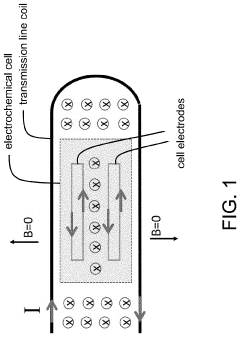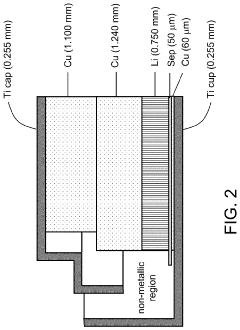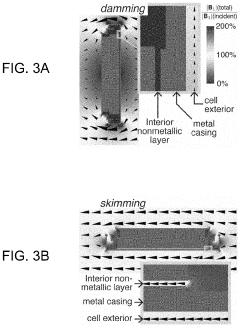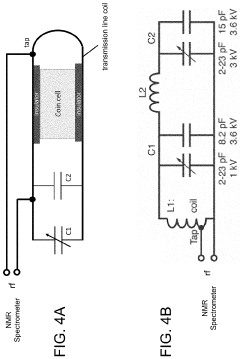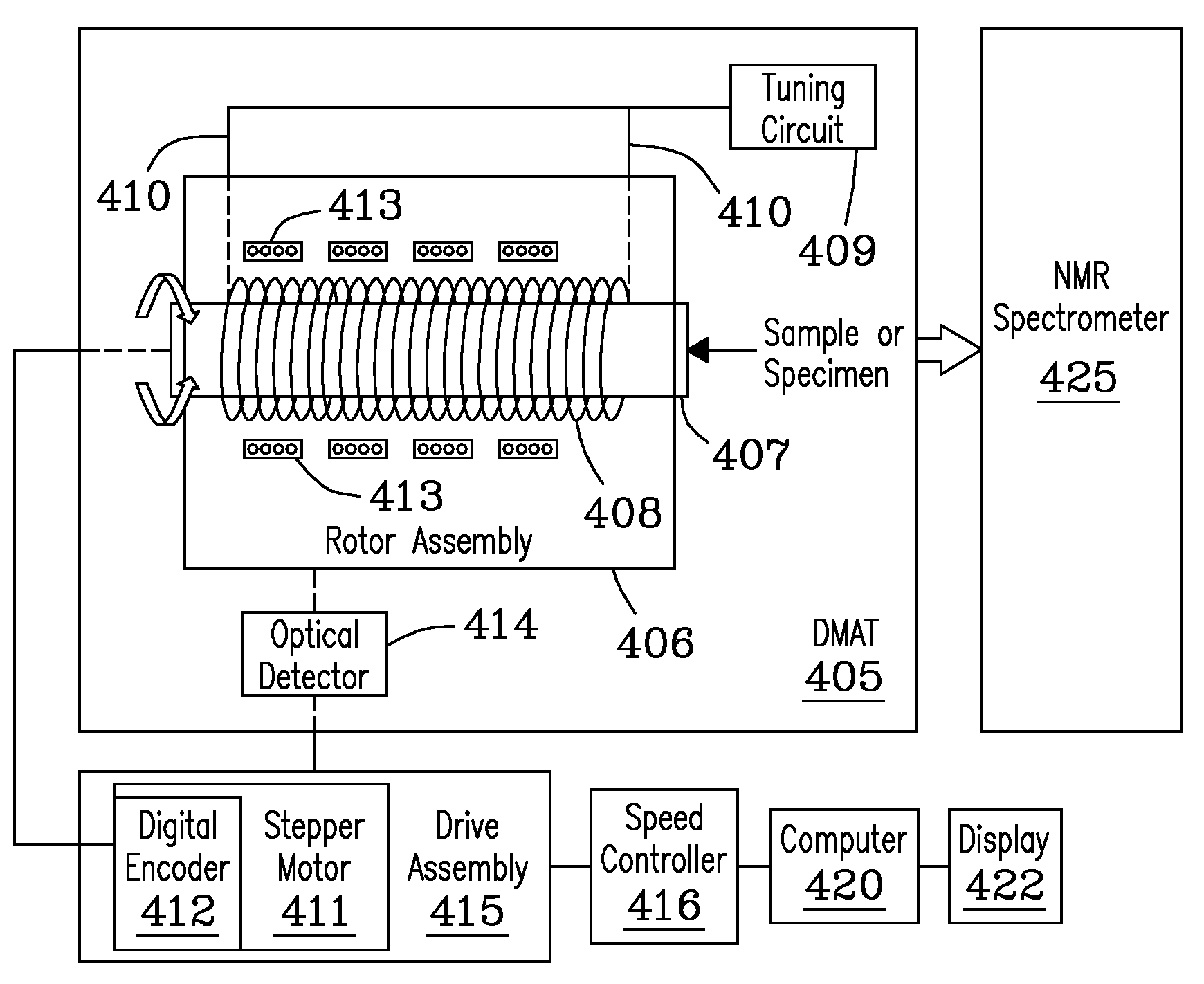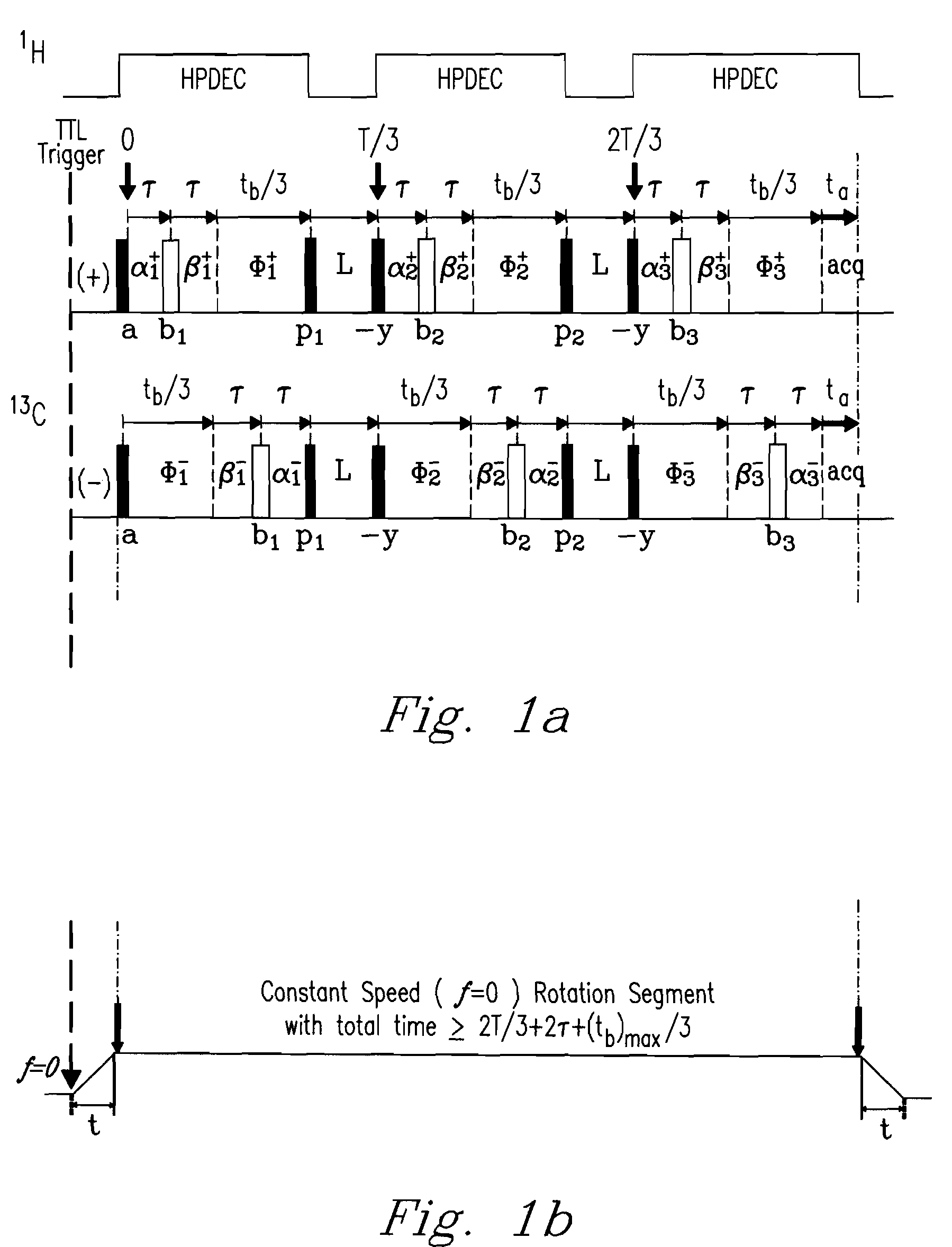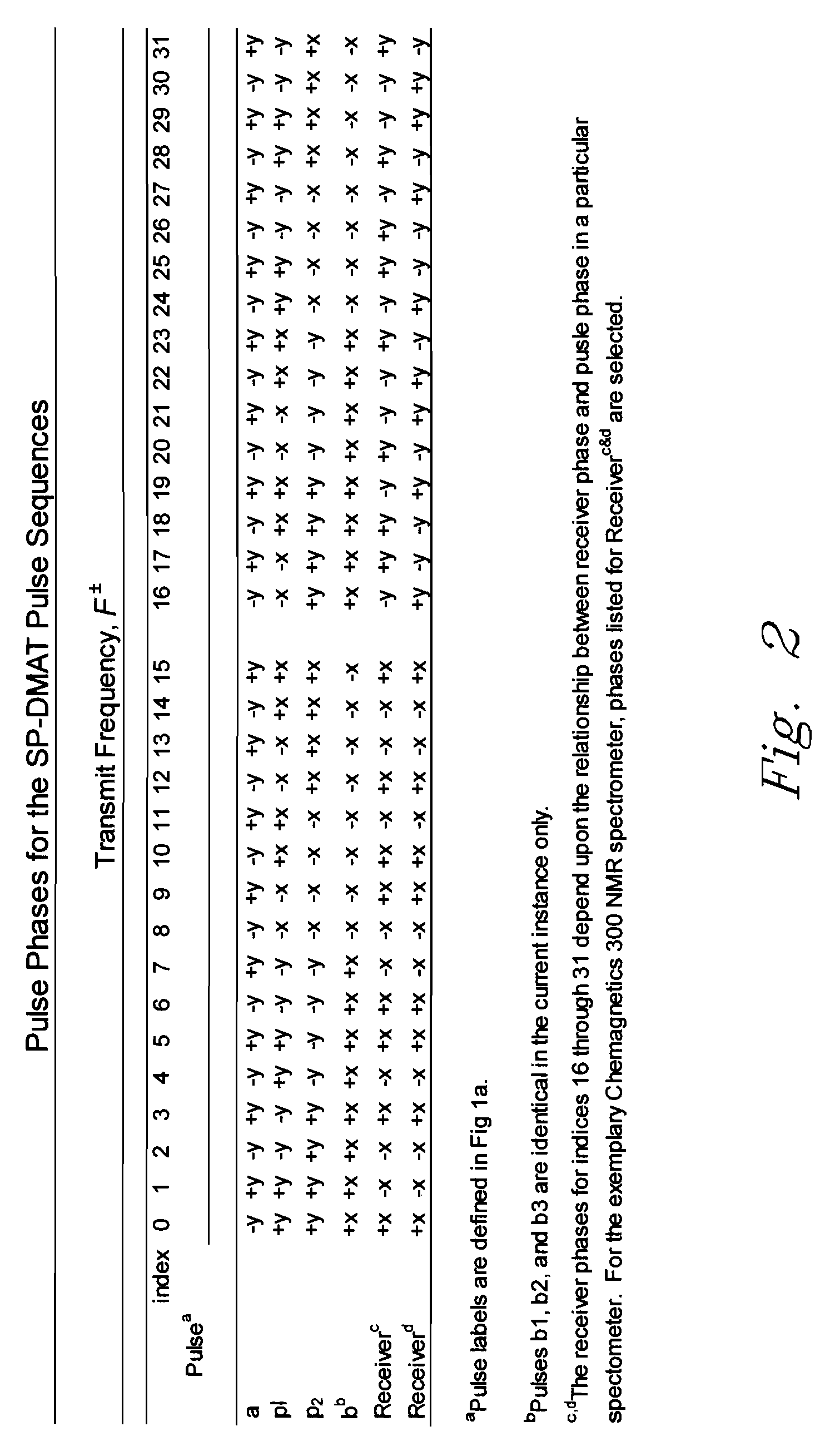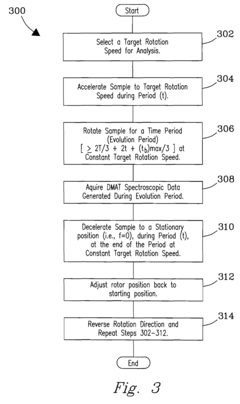Advanced Characterization: In Situ Magnetic Calorimetry Techniques
AUG 29, 20259 MIN READ
Generate Your Research Report Instantly with AI Agent
Patsnap Eureka helps you evaluate technical feasibility & market potential.
Magnetic Calorimetry Background and Objectives
Magnetic calorimetry represents a sophisticated analytical technique that has evolved significantly over the past several decades. Initially developed in the mid-20th century for basic thermodynamic measurements, this methodology has transformed into a powerful tool for investigating magnetic materials and their properties under various conditions. The technique fundamentally measures heat changes associated with magnetic transitions, providing crucial insights into material behavior that other characterization methods cannot easily detect.
The evolution of magnetic calorimetry has been marked by several key technological advancements. Early systems relied on simple adiabatic conditions with limited sensitivity, while modern instruments incorporate superconducting quantum interference devices (SQUIDs) and advanced microelectromechanical systems (MEMS) that enable measurements at unprecedented resolution. This progression has expanded the technique's applicability from basic research to advanced materials development across multiple industries.
Current research trends indicate a growing interest in in situ magnetic calorimetry techniques, which allow for real-time observation of magnetic phenomena under dynamic conditions. This represents a significant departure from traditional ex situ measurements and opens new avenues for understanding material behavior under realistic operating environments.
The primary objective of advancing in situ magnetic calorimetry is to develop measurement systems capable of characterizing magnetic materials under simultaneous multiple stimuli—including variable temperature, pressure, magnetic field, and chemical environment. Such capabilities would revolutionize our understanding of magnetocaloric materials, magnetic phase transitions, and spin dynamics in complex systems.
Another critical goal is to improve the temporal and spatial resolution of measurements, enabling the observation of transient magnetic phenomena occurring at microsecond or even nanosecond timescales. This advancement would provide unprecedented insights into magnetic switching processes, relaxation dynamics, and quantum magnetic effects that remain poorly understood.
Integration with complementary characterization techniques represents a further objective, with particular emphasis on combining magnetic calorimetry with spectroscopic methods and structural analysis tools. This multi-modal approach aims to establish correlations between magnetic properties, electronic structure, and atomic arrangements in materials.
The ultimate technological target is to develop standardized, user-friendly in situ magnetic calorimetry platforms that can be widely adopted across research institutions and industrial R&D facilities, thereby accelerating materials discovery and optimization processes for applications ranging from energy storage to quantum computing.
The evolution of magnetic calorimetry has been marked by several key technological advancements. Early systems relied on simple adiabatic conditions with limited sensitivity, while modern instruments incorporate superconducting quantum interference devices (SQUIDs) and advanced microelectromechanical systems (MEMS) that enable measurements at unprecedented resolution. This progression has expanded the technique's applicability from basic research to advanced materials development across multiple industries.
Current research trends indicate a growing interest in in situ magnetic calorimetry techniques, which allow for real-time observation of magnetic phenomena under dynamic conditions. This represents a significant departure from traditional ex situ measurements and opens new avenues for understanding material behavior under realistic operating environments.
The primary objective of advancing in situ magnetic calorimetry is to develop measurement systems capable of characterizing magnetic materials under simultaneous multiple stimuli—including variable temperature, pressure, magnetic field, and chemical environment. Such capabilities would revolutionize our understanding of magnetocaloric materials, magnetic phase transitions, and spin dynamics in complex systems.
Another critical goal is to improve the temporal and spatial resolution of measurements, enabling the observation of transient magnetic phenomena occurring at microsecond or even nanosecond timescales. This advancement would provide unprecedented insights into magnetic switching processes, relaxation dynamics, and quantum magnetic effects that remain poorly understood.
Integration with complementary characterization techniques represents a further objective, with particular emphasis on combining magnetic calorimetry with spectroscopic methods and structural analysis tools. This multi-modal approach aims to establish correlations between magnetic properties, electronic structure, and atomic arrangements in materials.
The ultimate technological target is to develop standardized, user-friendly in situ magnetic calorimetry platforms that can be widely adopted across research institutions and industrial R&D facilities, thereby accelerating materials discovery and optimization processes for applications ranging from energy storage to quantum computing.
Market Applications and Research Demand Analysis
In situ magnetic calorimetry techniques have witnessed growing market applications across multiple industries, driven by the increasing demand for advanced materials characterization methods. The global market for materials characterization equipment was valued at approximately $3.2 billion in 2022, with magnetic and thermal analysis instruments representing a significant segment experiencing annual growth rates of 6-8%.
The pharmaceutical industry has emerged as a major adopter of these techniques, utilizing magnetic calorimetry for drug development and quality control processes. The ability to analyze magnetic phase transitions and thermodynamic properties in real-time provides crucial data for formulation optimization and stability studies. With pharmaceutical R&D spending exceeding $200 billion globally, demand for advanced characterization methods continues to rise.
Materials science research institutions represent another significant market segment, where in situ magnetic calorimetry enables precise investigation of novel magnetic materials, superconductors, and quantum materials. The technique's capability to simultaneously measure magnetic and thermal properties under controlled environmental conditions makes it invaluable for fundamental research and materials development.
The semiconductor industry has also recognized the value of these techniques for analyzing magnetic thin films and nanostructures used in memory devices and sensors. As the semiconductor market expands beyond $500 billion, characterization techniques that can provide insights into material behavior at nanoscale dimensions become increasingly critical.
Energy storage research represents a rapidly growing application area, particularly for battery materials development. In situ magnetic calorimetry allows researchers to monitor phase transitions and structural changes during charging/discharging cycles, providing insights that can lead to improved battery performance and longevity.
Research demand analysis indicates several key drivers fueling interest in advanced magnetic calorimetry techniques. First, there is growing recognition of the correlation between magnetic properties and functional performance in many advanced materials. Second, the push toward miniaturization in electronics and medical devices requires characterization methods capable of analyzing increasingly smaller sample volumes with high sensitivity.
Additionally, the emergence of quantum technologies has created demand for techniques that can characterize quantum materials under precise environmental conditions. The quantum computing market, projected to reach $1.7 billion by 2026, requires sophisticated materials characterization methods to support development of quantum bits and related components.
Academic research funding for advanced characterization methods has seen steady growth, with government initiatives in the US, EU, and Asia allocating substantial resources to materials research infrastructure. This funding environment supports continued innovation in magnetic calorimetry techniques and ensures sustained market demand.
The pharmaceutical industry has emerged as a major adopter of these techniques, utilizing magnetic calorimetry for drug development and quality control processes. The ability to analyze magnetic phase transitions and thermodynamic properties in real-time provides crucial data for formulation optimization and stability studies. With pharmaceutical R&D spending exceeding $200 billion globally, demand for advanced characterization methods continues to rise.
Materials science research institutions represent another significant market segment, where in situ magnetic calorimetry enables precise investigation of novel magnetic materials, superconductors, and quantum materials. The technique's capability to simultaneously measure magnetic and thermal properties under controlled environmental conditions makes it invaluable for fundamental research and materials development.
The semiconductor industry has also recognized the value of these techniques for analyzing magnetic thin films and nanostructures used in memory devices and sensors. As the semiconductor market expands beyond $500 billion, characterization techniques that can provide insights into material behavior at nanoscale dimensions become increasingly critical.
Energy storage research represents a rapidly growing application area, particularly for battery materials development. In situ magnetic calorimetry allows researchers to monitor phase transitions and structural changes during charging/discharging cycles, providing insights that can lead to improved battery performance and longevity.
Research demand analysis indicates several key drivers fueling interest in advanced magnetic calorimetry techniques. First, there is growing recognition of the correlation between magnetic properties and functional performance in many advanced materials. Second, the push toward miniaturization in electronics and medical devices requires characterization methods capable of analyzing increasingly smaller sample volumes with high sensitivity.
Additionally, the emergence of quantum technologies has created demand for techniques that can characterize quantum materials under precise environmental conditions. The quantum computing market, projected to reach $1.7 billion by 2026, requires sophisticated materials characterization methods to support development of quantum bits and related components.
Academic research funding for advanced characterization methods has seen steady growth, with government initiatives in the US, EU, and Asia allocating substantial resources to materials research infrastructure. This funding environment supports continued innovation in magnetic calorimetry techniques and ensures sustained market demand.
Current State and Technical Challenges in In Situ Magnetic Calorimetry
In situ magnetic calorimetry techniques have evolved significantly over the past decade, establishing themselves as crucial tools for advanced materials characterization. Currently, these techniques enable real-time measurement of magnetic and thermal properties of materials under varying conditions, providing unprecedented insights into phase transitions, magnetic ordering, and thermodynamic behaviors at microscopic scales.
The global landscape shows uneven development, with leading research primarily concentrated in North America, Western Europe, and East Asia. Research institutions in the United States, Germany, Japan, and China have established advanced facilities dedicated to magnetic calorimetry research, while emerging economies are gradually building capabilities in this domain.
State-of-the-art in situ magnetic calorimetry systems now achieve temperature resolutions below 10 μK and magnetic field precision of 0.1 mT, representing significant improvements over earlier generations. Recent advancements include the integration of superconducting quantum interference devices (SQUIDs) for enhanced sensitivity and the development of miniaturized sensors enabling measurements on microscale samples.
Despite these advances, several technical challenges persist. The primary limitation remains the difficulty in achieving simultaneous high spatial and temporal resolution. Current systems struggle to maintain sensitivity when measurement speeds increase, creating a fundamental trade-off between precision and real-time monitoring capabilities.
Signal-to-noise ratio optimization presents another significant challenge, particularly when working with nanoscale materials or under extreme conditions. Environmental interference, including electromagnetic noise and thermal fluctuations, continues to complicate accurate measurements despite sophisticated shielding technologies.
Sample preparation and mounting issues create additional complications, as the measurement process itself can alter the material properties being studied. Maintaining sample integrity during in situ measurements, especially at extreme temperatures or magnetic fields, remains problematic for certain material classes.
Integration challenges exist when combining magnetic calorimetry with other characterization techniques such as X-ray diffraction or electron microscopy. These multi-modal approaches, while scientifically valuable, introduce technical complexities in instrument design and data synchronization.
Data processing and interpretation represent another frontier challenge. The massive datasets generated by modern calorimetry systems require advanced computational methods, and correlating magnetic calorimetric data with theoretical models remains complex, particularly for novel materials with unknown phase diagrams.
Accessibility presents a practical challenge, as high-end magnetic calorimetry systems remain expensive and technically demanding to operate, limiting widespread adoption in smaller research institutions and industrial R&D settings. This has created a technological divide that impacts the pace of innovation in certain regions.
The global landscape shows uneven development, with leading research primarily concentrated in North America, Western Europe, and East Asia. Research institutions in the United States, Germany, Japan, and China have established advanced facilities dedicated to magnetic calorimetry research, while emerging economies are gradually building capabilities in this domain.
State-of-the-art in situ magnetic calorimetry systems now achieve temperature resolutions below 10 μK and magnetic field precision of 0.1 mT, representing significant improvements over earlier generations. Recent advancements include the integration of superconducting quantum interference devices (SQUIDs) for enhanced sensitivity and the development of miniaturized sensors enabling measurements on microscale samples.
Despite these advances, several technical challenges persist. The primary limitation remains the difficulty in achieving simultaneous high spatial and temporal resolution. Current systems struggle to maintain sensitivity when measurement speeds increase, creating a fundamental trade-off between precision and real-time monitoring capabilities.
Signal-to-noise ratio optimization presents another significant challenge, particularly when working with nanoscale materials or under extreme conditions. Environmental interference, including electromagnetic noise and thermal fluctuations, continues to complicate accurate measurements despite sophisticated shielding technologies.
Sample preparation and mounting issues create additional complications, as the measurement process itself can alter the material properties being studied. Maintaining sample integrity during in situ measurements, especially at extreme temperatures or magnetic fields, remains problematic for certain material classes.
Integration challenges exist when combining magnetic calorimetry with other characterization techniques such as X-ray diffraction or electron microscopy. These multi-modal approaches, while scientifically valuable, introduce technical complexities in instrument design and data synchronization.
Data processing and interpretation represent another frontier challenge. The massive datasets generated by modern calorimetry systems require advanced computational methods, and correlating magnetic calorimetric data with theoretical models remains complex, particularly for novel materials with unknown phase diagrams.
Accessibility presents a practical challenge, as high-end magnetic calorimetry systems remain expensive and technically demanding to operate, limiting widespread adoption in smaller research institutions and industrial R&D settings. This has created a technological divide that impacts the pace of innovation in certain regions.
Current In Situ Magnetic Calorimetry Methodologies
01 In-situ magnetic calorimetry measurement systems
These systems are designed for real-time measurement of magnetic properties and thermal responses in materials. They integrate magnetic field generators with temperature control and measurement capabilities to allow simultaneous characterization of magnetic behavior and calorimetric properties. The systems typically include sensors for detecting magnetic field changes, temperature variations, and heat flow, enabling comprehensive analysis of material properties under controlled conditions.- In-situ magnetic calorimetry measurement systems: Systems designed for in-situ magnetic calorimetry measurements that enable real-time characterization of magnetic properties and thermal responses of materials. These systems typically integrate magnetic field generators, temperature sensors, and data acquisition components to monitor thermodynamic and magnetic properties simultaneously under controlled conditions. The technology allows for precise measurement of magnetic phase transitions, magnetocaloric effects, and thermal properties while the sample is subjected to varying magnetic fields.
- Magnetic calorimetry for material characterization: Techniques that utilize magnetic calorimetry for comprehensive characterization of material properties. These methods measure heat capacity, thermal conductivity, and magnetic susceptibility to analyze phase transitions, structural changes, and magnetic ordering in various materials. The approach combines principles of calorimetry with magnetic measurements to provide insights into material behavior under different magnetic field strengths and temperatures, enabling detailed analysis of magnetocaloric materials and magnetic phase diagrams.
- Advanced sensors for magnetic calorimetry applications: Specialized sensors developed specifically for magnetic calorimetry applications that offer enhanced sensitivity, stability, and response time. These sensors can detect minute temperature changes associated with magnetic transitions and magnetocaloric effects. The technology incorporates innovative sensor designs, including microelectromechanical systems (MEMS), thin-film thermocouples, and magnetoresistive elements, to achieve high-precision measurements of thermal and magnetic properties simultaneously in challenging experimental conditions.
- In-situ magnetic calorimetry for process monitoring: Implementation of in-situ magnetic calorimetry techniques for real-time process monitoring in industrial applications. These systems provide continuous feedback on material properties during manufacturing processes, heat treatments, or material synthesis. The technology enables quality control by detecting anomalies in magnetic and thermal signatures, optimizing process parameters, and ensuring consistent material properties in applications such as metallurgy, semiconductor processing, and magnetic material production.
- Data analysis methods for magnetic calorimetry: Advanced computational and analytical methods specifically developed for processing and interpreting data from magnetic calorimetry experiments. These techniques include machine learning algorithms, signal processing, and thermodynamic modeling to extract meaningful information from complex calorimetric and magnetic measurements. The approaches enable accurate determination of phase transition temperatures, magnetic entropy changes, and other critical parameters while accounting for experimental artifacts and background signals in the characterization of magnetic materials.
02 Magnetic nanoparticle characterization techniques
Specialized techniques for characterizing magnetic nanoparticles involve measuring their thermal and magnetic responses under applied fields. These methods can determine properties such as magnetic susceptibility, specific absorption rate, and heating efficiency. The techniques often employ oscillating magnetic fields to induce heating in the nanoparticles while simultaneously measuring temperature changes, allowing for precise determination of their magnetic and thermal characteristics for applications in biomedicine and materials science.Expand Specific Solutions03 Advanced magnetic materials analysis equipment
Equipment designed specifically for analyzing magnetic materials combines multiple characterization techniques in a single platform. These systems integrate magnetic field generators, temperature controllers, and various detection methods to provide comprehensive analysis of magnetic properties. The equipment often features automated measurement protocols, data processing algorithms, and specialized sample holders to facilitate accurate characterization of magnetic materials under various conditions.Expand Specific Solutions04 Thermal response measurement of magnetic materials
Methods for measuring the thermal response of magnetic materials under applied fields focus on quantifying heat generation and dissipation. These techniques employ sensitive temperature sensors and controlled magnetic field application to determine how materials respond thermally to magnetic stimulation. The approaches can measure properties such as specific heat capacity, thermal conductivity, and magnetocaloric effects, providing insights into energy conversion efficiency and thermal stability of magnetic materials.Expand Specific Solutions05 Real-time monitoring systems for magnetic processes
Systems designed for continuous monitoring of magnetic processes incorporate sensors and data acquisition equipment that can operate under varying field conditions. These monitoring systems enable real-time tracking of magnetic property changes during processing, aging, or operation of materials and devices. They typically include multiple sensor types, data processing capabilities, and visualization tools to provide comprehensive information about magnetic behavior changes over time or under different environmental conditions.Expand Specific Solutions
Leading Research Institutions and Equipment Manufacturers
In Situ Magnetic Calorimetry Techniques represent an emerging field in advanced characterization, currently in its growth phase with increasing market adoption. The global market is expanding as research institutions and industries recognize its value for precise thermal and magnetic property measurements. Technologically, the field shows varying maturity levels across players. Shanghai Institute of Ceramics and Ningbo Institute of Industrial Technology lead in fundamental research, while commercial entities like Siemens Healthineers and Honeywell International are advancing practical applications. Academic institutions including Jilin University and National University of Singapore contribute significant theoretical frameworks. The technology bridges multiple sectors including materials science, medical diagnostics, and semiconductor manufacturing, with collaborative efforts between research institutions and industry partners accelerating development toward standardized methodologies and wider implementation.
Shanghai Institute of Ceramics, Chinese Academy of Sciences
Technical Solution: Shanghai Institute of Ceramics has developed an integrated in situ magnetic calorimetry system that combines high-precision temperature control with simultaneous magnetic field application. Their approach utilizes superconducting quantum interference device (SQUID) magnetometry coupled with differential scanning calorimetry (DSC) to achieve femtojoule-level energy resolution. The system incorporates a proprietary sample holder design that minimizes thermal gradients and background signals, allowing for measurements at temperatures ranging from 1.8K to 400K under magnetic fields up to 7 Tesla. This technology enables real-time observation of phase transitions, magnetic ordering phenomena, and magnetocaloric effects in advanced ceramic materials, particularly relevant for energy conversion applications and fundamental studies of quantum materials.
Strengths: Exceptional sensitivity with femtojoule resolution; wide temperature range operation; minimal thermal noise; specialized for ceramic and quantum materials research. Weaknesses: Complex system integration requires significant expertise; relatively high operational costs; limited to laboratory settings rather than industrial applications.
Siemens Healthineers AG
Technical Solution: Siemens Healthineers has developed a specialized in situ magnetic calorimetry system optimized for biomedical applications, particularly for characterizing magnetic nanoparticles used in hyperthermia cancer treatments and MRI contrast agents. Their platform incorporates alternating magnetic field generators capable of frequencies from 50 kHz to 1 MHz with field strengths up to 50 mT, coupled with highly sensitive microcalorimetry cells. The system features patented compensation algorithms that separate heating effects due to magnetic relaxation from other thermal processes, enabling precise determination of specific absorption rates (SAR) under physiologically relevant conditions. A unique aspect of their technology is the integration with tissue-mimicking phantoms that simulate various biological environments, allowing for more accurate translation of in vitro measurements to clinical applications. The system includes automated sample handling and data analysis software specifically designed for pharmaceutical and biomedical research workflows.
Strengths: Optimized for biomedical and pharmaceutical applications; excellent reproducibility; simulates physiological conditions; user-friendly automation. Weaknesses: Limited to relatively low magnetic field strengths; primarily focused on nanoparticle characterization rather than broader materials research; higher cost compared to academic research systems.
Key Patents and Scientific Breakthroughs
Probe for operando in situ electrochemical nuclear magnetic resonance spectroscopy
PatentActiveUS11215686B2
Innovation
- A probe using a transmission line coil with anti-parallel planar conductors applies a tangentially oriented rf magnetic field to electrochemical cells, allowing penetration through the cell's gap and enabling noninvasive, chemically resolved NMR analysis of unmodified coin cells and other electrochemical devices.
Discrete magic angle turning system, apparatus, and process for in situ magnetic resonance spectroscopy and imaging
PatentInactiveUS7535224B2
Innovation
- The Discrete Magic Angle Turning (DMAT) system rotates a sample about an axis inclined at 54°44' relative to a static magnetic field in a pulsed radio frequency magnetic field, allowing for high-resolution in situ spectroscopic analysis by synchronizing rotation speed with an evolution period of an RF pulse segment, enabling control over temperature, pressure, and feed compositions through connected tubes or feed lines.
Materials Compatibility and Sample Preparation Considerations
The successful implementation of in situ magnetic calorimetry techniques requires careful consideration of materials compatibility and sample preparation protocols. Sample materials must maintain their integrity under the combined influence of magnetic fields, temperature variations, and measurement apparatus constraints. Ferromagnetic and paramagnetic materials demand particular attention due to their pronounced response to applied magnetic fields, which can significantly affect measurement accuracy.
Materials selection criteria must account for thermal conductivity properties, as samples with poor thermal conductivity may introduce temperature gradients that compromise measurement precision. Additionally, materials with high magnetic susceptibility can distort local magnetic fields, necessitating calibration adjustments or compensation techniques during data analysis.
Sample geometry and dimensions play a crucial role in measurement quality. Optimal sample shapes typically feature uniform cross-sections to ensure homogeneous field distribution, while sample size must balance signal strength against the resolution limitations of the calorimetric apparatus. For nanoscale materials, surface-to-volume ratio effects become particularly significant, often requiring specialized preparation techniques to mitigate surface oxidation or contamination.
Preparation protocols must address potential sources of measurement artifacts. Surface cleanliness is paramount, as contaminants can introduce spurious magnetic signals or alter thermal response characteristics. Standardized cleaning procedures, often involving ultrasonic baths with appropriate solvents followed by controlled drying processes, have become industry standard for high-precision measurements.
Sample mounting within the calorimeter requires materials that minimize thermal and magnetic interference. Common mounting solutions include non-magnetic, low-thermal-conductivity polymers or ceramics that isolate the sample from external influences while maintaining thermal stability during measurement cycles.
For biological samples or environmentally sensitive materials, specialized preparation techniques may be necessary to preserve native properties while enabling accurate measurement. These might include cryogenic preparation methods, protective coatings, or inert atmosphere handling protocols that prevent sample degradation while maintaining measurement accessibility.
Reproducibility in sample preparation represents a significant challenge, particularly for complex materials systems. Detailed documentation of preparation parameters, including thermal history, mechanical processing, and environmental exposure, is essential for meaningful comparative analysis across multiple measurements or between different research groups.
Materials selection criteria must account for thermal conductivity properties, as samples with poor thermal conductivity may introduce temperature gradients that compromise measurement precision. Additionally, materials with high magnetic susceptibility can distort local magnetic fields, necessitating calibration adjustments or compensation techniques during data analysis.
Sample geometry and dimensions play a crucial role in measurement quality. Optimal sample shapes typically feature uniform cross-sections to ensure homogeneous field distribution, while sample size must balance signal strength against the resolution limitations of the calorimetric apparatus. For nanoscale materials, surface-to-volume ratio effects become particularly significant, often requiring specialized preparation techniques to mitigate surface oxidation or contamination.
Preparation protocols must address potential sources of measurement artifacts. Surface cleanliness is paramount, as contaminants can introduce spurious magnetic signals or alter thermal response characteristics. Standardized cleaning procedures, often involving ultrasonic baths with appropriate solvents followed by controlled drying processes, have become industry standard for high-precision measurements.
Sample mounting within the calorimeter requires materials that minimize thermal and magnetic interference. Common mounting solutions include non-magnetic, low-thermal-conductivity polymers or ceramics that isolate the sample from external influences while maintaining thermal stability during measurement cycles.
For biological samples or environmentally sensitive materials, specialized preparation techniques may be necessary to preserve native properties while enabling accurate measurement. These might include cryogenic preparation methods, protective coatings, or inert atmosphere handling protocols that prevent sample degradation while maintaining measurement accessibility.
Reproducibility in sample preparation represents a significant challenge, particularly for complex materials systems. Detailed documentation of preparation parameters, including thermal history, mechanical processing, and environmental exposure, is essential for meaningful comparative analysis across multiple measurements or between different research groups.
Data Processing and Interpretation Frameworks
The effective analysis of data from in situ magnetic calorimetry techniques requires sophisticated processing frameworks and interpretative methodologies. Current data processing approaches typically involve multi-stage pipelines that transform raw experimental signals into meaningful physical parameters. These frameworks commonly incorporate noise reduction algorithms, baseline correction methods, and signal deconvolution techniques specifically optimized for magnetic calorimetry data characteristics.
Machine learning and artificial intelligence have emerged as powerful tools in this domain, enabling automated feature extraction and pattern recognition across large datasets. Neural network architectures, particularly convolutional and recurrent networks, have demonstrated exceptional capability in identifying subtle magnetic transitions that might be overlooked in traditional analysis approaches. These AI-driven frameworks can process multidimensional data streams simultaneously, correlating temperature, magnetic field, and calorimetric response variables.
Statistical analysis methods play a crucial role in quantifying measurement uncertainties and establishing confidence intervals for derived thermodynamic parameters. Bayesian inference techniques have gained prominence for their ability to incorporate prior knowledge about magnetic systems into the interpretation process, resulting in more robust conclusions even from limited experimental data. Monte Carlo simulations complement these approaches by providing theoretical validation frameworks against which experimental results can be compared.
Real-time data processing represents a frontier challenge, as modern in situ magnetic calorimetry experiments generate massive data volumes at unprecedented rates. Edge computing architectures are being deployed to enable preliminary analysis at the instrument level, reducing data transfer bottlenecks and allowing for adaptive experimental protocols that respond to emerging features during measurement.
Standardization efforts within the scientific community aim to establish common data formats and processing protocols, facilitating cross-laboratory comparisons and meta-analyses. Open-source software initiatives like MagCalor and ThermoMag provide accessible platforms for researchers to implement consistent analytical approaches, though proprietary solutions from instrument manufacturers continue to offer specialized capabilities for specific experimental configurations.
Visualization tools have evolved beyond simple graphing capabilities to include interactive exploration environments where researchers can manipulate multidimensional representations of magnetic calorimetry data. These advanced visualization frameworks enable intuitive identification of complex phase transitions and magnetic ordering phenomena that might be obscured in conventional two-dimensional plots.
Machine learning and artificial intelligence have emerged as powerful tools in this domain, enabling automated feature extraction and pattern recognition across large datasets. Neural network architectures, particularly convolutional and recurrent networks, have demonstrated exceptional capability in identifying subtle magnetic transitions that might be overlooked in traditional analysis approaches. These AI-driven frameworks can process multidimensional data streams simultaneously, correlating temperature, magnetic field, and calorimetric response variables.
Statistical analysis methods play a crucial role in quantifying measurement uncertainties and establishing confidence intervals for derived thermodynamic parameters. Bayesian inference techniques have gained prominence for their ability to incorporate prior knowledge about magnetic systems into the interpretation process, resulting in more robust conclusions even from limited experimental data. Monte Carlo simulations complement these approaches by providing theoretical validation frameworks against which experimental results can be compared.
Real-time data processing represents a frontier challenge, as modern in situ magnetic calorimetry experiments generate massive data volumes at unprecedented rates. Edge computing architectures are being deployed to enable preliminary analysis at the instrument level, reducing data transfer bottlenecks and allowing for adaptive experimental protocols that respond to emerging features during measurement.
Standardization efforts within the scientific community aim to establish common data formats and processing protocols, facilitating cross-laboratory comparisons and meta-analyses. Open-source software initiatives like MagCalor and ThermoMag provide accessible platforms for researchers to implement consistent analytical approaches, though proprietary solutions from instrument manufacturers continue to offer specialized capabilities for specific experimental configurations.
Visualization tools have evolved beyond simple graphing capabilities to include interactive exploration environments where researchers can manipulate multidimensional representations of magnetic calorimetry data. These advanced visualization frameworks enable intuitive identification of complex phase transitions and magnetic ordering phenomena that might be obscured in conventional two-dimensional plots.
Unlock deeper insights with Patsnap Eureka Quick Research — get a full tech report to explore trends and direct your research. Try now!
Generate Your Research Report Instantly with AI Agent
Supercharge your innovation with Patsnap Eureka AI Agent Platform!
